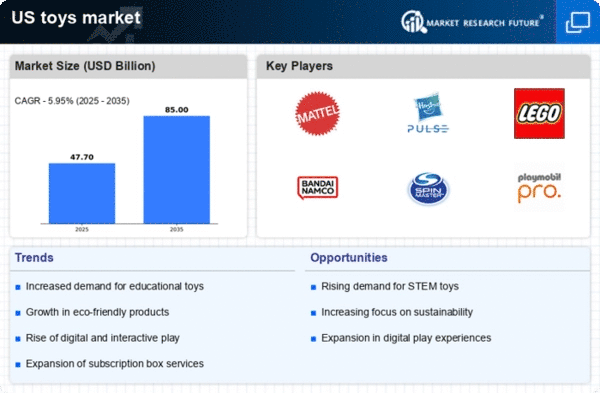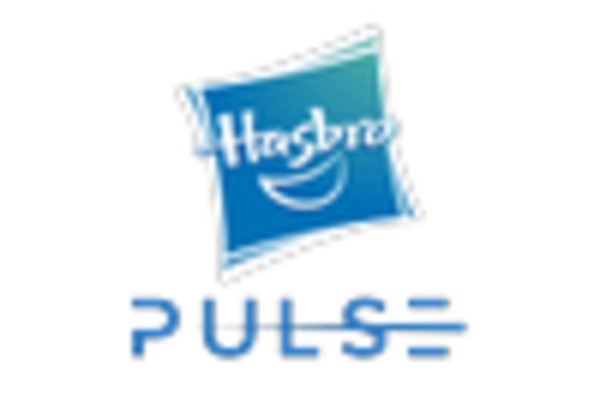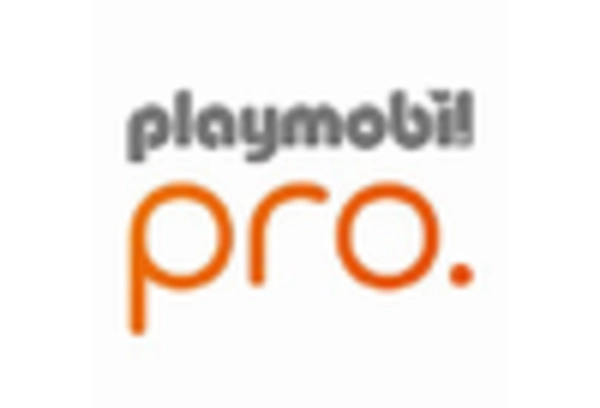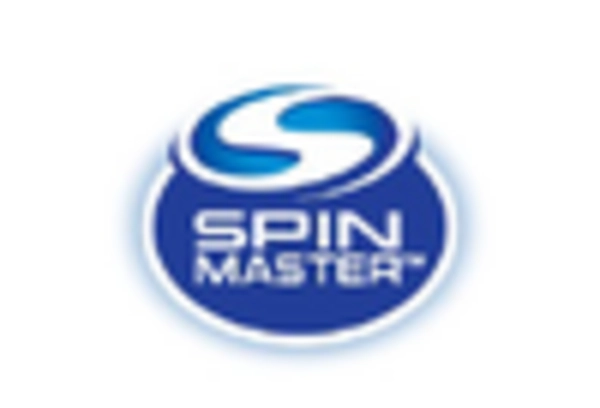Diversity in Toy Offerings
The toys market is witnessing a diversification of product offerings, catering to a broader range of interests and demographics. Manufacturers are increasingly developing toys that reflect cultural diversity, gender inclusivity, and various interests, appealing to a wider audience. This trend is particularly evident in the rise of STEM (Science, Technology, Engineering, and Mathematics) toys, which are designed to engage children in critical thinking and problem-solving. In 2025, STEM toys are projected to represent 25% of the total toys market, indicating a shift towards more educational and inclusive play options. This diversification is likely to attract new consumers and foster a more inclusive environment within the toys market.
Increasing Parental Investment
The toys market in the US is experiencing a notable increase in parental investment, as families prioritize educational and developmental toys for their children. This trend is driven by a growing awareness of the importance of early childhood development, leading parents to allocate more resources towards toys that promote learning and creativity. In 2025, it is estimated that the average family spends approximately $500 annually on toys, reflecting a 15% increase from previous years. This heightened investment is likely to bolster the toys market, as parents seek products that align with their educational values and provide long-term benefits for their children.
Influence of Social Media Trends
Social media platforms are playing a pivotal role in shaping consumer preferences within the toys market. Influencers and content creators are increasingly promoting various toy brands, leading to heightened visibility and desirability among children and parents alike. In 2025, it is estimated that 40% of toy purchases are influenced by social media recommendations, highlighting the power of digital marketing in this sector. This trend suggests that brands must engage with social media effectively to capture the attention of their target audience, thereby driving sales and enhancing brand loyalty in the toys market.
Expansion of E-commerce Platforms
The rise of e-commerce platforms is significantly transforming the toys market in the US. With the convenience of online shopping, consumers are increasingly turning to digital channels to purchase toys. In 2025, online sales are projected to account for over 30% of total toy sales, indicating a shift in consumer behavior. This trend is further fueled by the proliferation of mobile shopping applications and social media marketing, which enhance product visibility and accessibility. As a result, traditional brick-and-mortar stores are adapting their strategies to compete with online retailers, thereby reshaping the competitive landscape of the toys market.
Sustainability Initiatives by Manufacturers
Sustainability is becoming a key focus for manufacturers within the toys market, as consumers increasingly demand eco-friendly products. Companies are adopting sustainable practices, such as using recycled materials and reducing plastic waste, to appeal to environmentally conscious consumers. In 2025, it is anticipated that 20% of toy sales will come from sustainable products, reflecting a growing trend towards responsible consumption. This shift not only addresses consumer concerns but also positions brands as leaders in sustainability, potentially enhancing their reputation and market share within the toys market.

















Leave a Comment